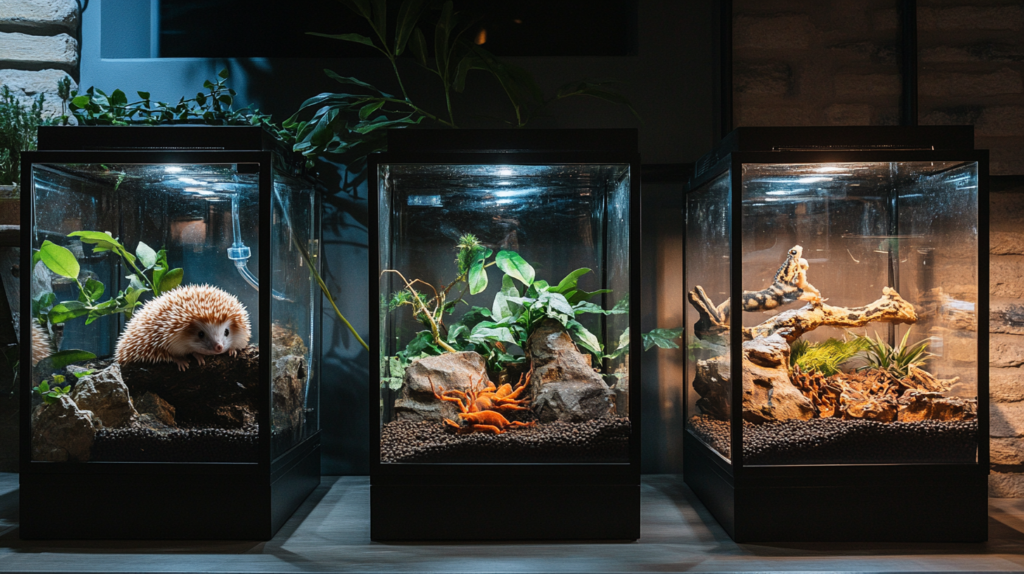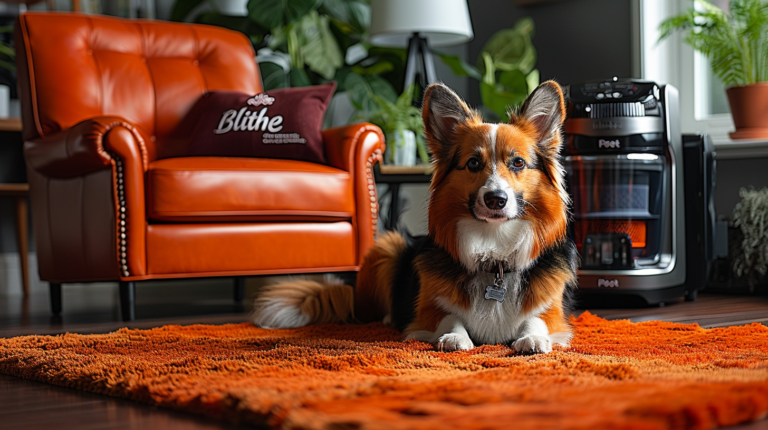Discover the top 5 pets for allergy sufferers that provide companionship without triggering symptoms. Expert advice on hypoallergenic pets and allergy management strategies.
Table of Contents
Introduction: Finding Joy with Pets Despite Allergies

For millions of Americans suffering from allergies, the dream of pet ownership often seems out of reach. According to the Asthma and Allergy Foundation of America, approximately 30% of people in the United States experience allergic reactions to cats and dogs. However, being an allergy sufferer doesn’t mean you must forego the joy and companionship that pets bring to our lives. Many pets for allergy sufferers exist that can minimize allergic reactions while still providing the love and companionship you desire.
In this comprehensive guide, we’ll explore the top 5 pets for allergy sufferers to consider, detailed information about pet allergies, and practical tips to manage symptoms. Whether you’re a first-time pet owner or looking to add another furry (or not-so-furry) friend to your family, this article will help you make an informed decision about which pet might best suit your allergic conditions.
Understanding Pet Allergies: What Causes Them?

Before diving into our list of recommended pets for allergy sufferers, it’s essential to understand what causes pet allergies in the first place.
The Science Behind Pet Allergies
Contrary to popular belief, pet allergies aren’t typically triggered by animal fur itself. Instead, the primary allergens are proteins found in:
- Pet dander (tiny, even microscopic, flakes of skin)
- Saliva
- Urine
- Sebaceous gland secretions
Dr. James Li, an allergist at the Mayo Clinic, explains: “When pets lick themselves, they spread these proteins to their fur. As the saliva dries, the proteins become airborne and can trigger allergic reactions in sensitive individuals.”
These allergens are particularly problematic because they’re:
- Extremely lightweight
- Can remain suspended in the air for hours
- Stick to furniture, walls, and clothing
- Can remain potent for months, even after the pet is no longer present
Common Symptoms of Pet Allergies
Allergic reactions to pets can manifest in various ways, including:
- Sneezing and runny nose
- Facial pain from nasal congestion
- Coughing, chest tightness, shortness of breath, and wheezing
- Watery, red, or itchy eyes
- Skin reactions such as raised, red patches or hives
- In severe cases, difficulty breathing or asthma attacks
According to a 2021 study published in the Journal of Allergy and Clinical Immunology, approximately 10-20% of the global population experiences pet allergies, with cat allergies being twice as common as dog allergies.
Top 5 Pets for Allergy Sufferers

Now that we understand what causes pet allergies, let’s explore the top five pets for allergy sufferers that are less likely to trigger allergic reactions.
1. Hypoallergenic Dogs
While no dog is completely allergen-free, certain breeds produce fewer allergens than others. These “hypoallergenic” dogs typically have hair rather than fur, shed less, or produce fewer allergenic proteins.
Best Hypoallergenic Dog Breeds:
- Poodles (Standard, Miniature, or Toy): Poodles have hair instead of fur, which means they shed minimally and produce less dander.
- Bichon Frise: Known for their powder-puff appearance, Bichon Frises have hair that grows continuously and sheds very little.
- Portuguese Water Dog: This breed (famously owned by the Obama family) has a single-layer coat that sheds minimally.
- Maltese: These small dogs have long, silky hair rather than fur and produce less dander.
- Schnauzer (Miniature, Standard, or Giant): With proper grooming, Schnauzers shed minimally and can be good options for allergy sufferers.
Dr. Clifford Bassett, Medical Director of Allergy and Asthma Care of New York, notes: “No dog breed is truly 100% hypoallergenic, but breeds that shed less tend to spread fewer allergens throughout your home.”
Tips for Living with Dogs if You Have Allergies:
- Regular grooming: Have someone without allergies brush your dog outside regularly to remove loose hair and dander.
- Frequent bathing: Bathing your dog weekly can reduce allergens by up to 84%, according to a study in the Journal of Allergy and Clinical Immunology.
- Create pet-free zones: Designate certain areas of your home, particularly your bedroom, as pet-free.
- Use high-efficiency air purifiers: HEPA filters can capture pet allergens from the air.
2. Hypoallergenic Cats
Cats generally produce more allergens than dogs, making them more problematic for allergy sufferers. However, certain cat breeds produce fewer Fel d 1 proteins (the primary cat allergen) than others.
Best Hypoallergenic Cat Breeds:
- Siberian: Despite their long fur, Siberians produce less Fel d 1 protein in their saliva.
- Balinese: Often referred to as “long-haired Siamese,” they produce less of the Fel d 1 protein.
- Bengal: Their unique coat requires less maintenance and self-grooming, resulting in less dried saliva on their fur.
- Russian Blue: They have a dense, short coat that traps more dander and they produce less Fel d 1 protein.
- Sphynx: While not truly hypoallergenic, their lack of fur means less surface area for allergen accumulation (though they still produce allergens in their saliva and skin oils).
A 2021 study from the Journal of Feline Medicine and Surgery found that the Siberian cat produces approximately 20% less Fel d 1 protein than other cat breeds, making them potentially more suitable for people with mild to moderate cat allergies.
Tips for Living with Cats if You Have Allergies:
- Wash hands after petting: Always wash your hands thoroughly after handling your cat.
- Weekly baths: If your cat tolerates it, weekly baths can significantly reduce allergens.
- Use allergen-neutralizing wipes: Special pet wipes can help reduce allergens on your cat’s coat.
- Clean litter box frequently: Cat urine contains allergens, so frequent litter box cleaning is essential (ideally by someone without allergies).
3. Fish: The Ultimate Hypoallergenic Pet
For those with severe pet allergies, fish present an excellent alternative that can still provide the joy of pet ownership without triggering allergic reactions.
Benefits of Fish as Pets for Allergy Sufferers:
- Completely allergen-free: Fish don’t produce dander, saliva, or other allergens that trigger reactions.
- Low maintenance: Many fish species require relatively simple care.
- Therapeutic benefits: Studies have shown that watching fish swim can reduce stress and lower blood pressure.
- Educational value: Fish tanks can be great teaching tools about ecosystems and biology.
Best Fish Species for Beginners:
- Betta Fish: These colorful fish are hardy and can live in smaller tanks.
- Goldfish: A classic choice, but they do require larger tanks than many people realize.
- Tetras: Small, colorful, and social fish that do well in community tanks.
- Guppies: Easy to care for and breed, with vibrant colors.
- Platies: Peaceful, colorful, and adaptable to various water conditions.
According to a study published in Environment and Behavior, observing fish in aquariums has been shown to reduce blood pressure and heart rate, potentially offering additional health benefits beyond being allergy-friendly.
4. Reptiles and Amphibians
Reptiles and amphibians can make fascinating, interactive pets that rarely cause allergic reactions.
Popular Reptile and Amphibian Pets:
- Leopard Geckos: Docile, relatively easy to care for, and don’t require UVB lighting.
- Bearded Dragons: Social, handleable reptiles that form bonds with their owners.
- Corn Snakes: Non-venomous, docile snakes suitable for beginners.
- Turtles: Long-lived pets that can be entertaining to watch (though they require specialized care).
- Frogs: Species like White’s Tree Frogs are relatively low-maintenance and interesting to observe.
Dr. Stephen Reichley, a veterinarian specializing in exotic pets, states: “Reptiles can be excellent pets for allergy sufferers as they don’t produce dander or fur. However, it’s important to note that their habitat materials, like certain substrates or feeder insects, could potentially cause allergies in some individuals.”
Considerations for Reptile Ownership:
- Specialized care requirements: Most reptiles need specific temperature gradients, humidity levels, and UVB lighting.
- Dietary needs: Many reptiles require live food such as insects or rodents.
- Longevity: Some reptiles can live for decades, requiring a long-term commitment.
- Salmonella risk: Proper hygiene is essential, as reptiles can carry Salmonella bacteria.
5. Birds with Powder-Down Free Feathers
While many birds produce a powdery substance called “powder down” that can trigger allergies, certain species produce less of this allergen.
Bird Species Less Likely to Trigger Allergies:
- Parakeets (Budgerigars): Small, social birds that produce less dander than larger species.
- Canaries: Known for their beautiful songs and relatively low dander production.
- Finches: Small birds that require minimal handling, reducing potential allergen transfer.
- Pionus Parrots: These medium-sized parrots produce less powder down than many other parrot species.
- Eclectus Parrots: Known for their striking sexual dimorphism (males and females look different) and lower powder down production.
Research from the American Academy of Allergy, Asthma & Immunology indicates that while all birds produce some allergens, smaller species generally produce less dander and powder down, making them potentially suitable for people with mild bird allergies.
Tips for Bird Ownership with Allergies:
- Air purification: Use HEPA filters near bird cages to capture airborne allergens.
- Regular cage cleaning: Clean the cage frequently to prevent buildup of feathers and dander.
- Consider cage placement: Keep birds in well-ventilated areas away from bedrooms.
- Bathe birds appropriately: Some species benefit from regular misting or bathing, which can reduce dander.
Less Common Pets for Allergy Sufferers

Beyond our top 5 recommendations, several other less conventional pets can be suitable for people with allergies.
Small Mammals with Lower Allergy Potential
While small mammals do produce allergens, certain species may cause fewer reactions in some individuals:
- Syrian Hamsters: Their small size means they produce less dander overall.
- Gerbils: Desert animals that naturally produce less urine, reducing allergen load.
- Guinea Pigs: While they do produce allergens, some allergy sufferers report fewer symptoms with these pets.
Invertebrates: Fascinating and Allergen-Free
For the adventurous pet owner, invertebrates offer fascinating alternatives:
- Hermit Crabs: These social crustaceans are low-maintenance and completely allergen-free.
- Millipedes: Docile creatures that can be safely handled and require simple care.
- Tarantulas: Despite their fearsome reputation, many species are docile and require minimal care.
- Ant Farms: Educational and interesting to observe, with no allergy risk.
Managing Your Home Environment for Allergy Control

Regardless of which pet you choose, managing your home environment is crucial for minimizing allergic reactions.
Effective Home Strategies for Reducing Pet Allergens
| Strategy | Effectiveness | Implementation Tips |
| HEPA Air Purifiers | High | Place in bedrooms and living areas; replace filters regularly |
| Hard Flooring Instead of Carpet | High | Replace wall-to-wall carpet with hardwood, laminate, or tile |
| Regular Cleaning | High | Vacuum with HEPA filter vacuums; damp mop regularly |
| Allergen-Proof Bedding | Medium-High | Use allergen-proof covers for mattresses and pillows |
| Designated Pet-Free Zones | Medium-High | Keep bedroom doors closed; use baby gates to restrict access |
| Regular Pet Grooming | Medium | Weekly baths and brushing (done by non-allergic person) |
| Laundry Management | Medium | Wash pet bedding weekly in hot water; change clothes after extensive pet contact |
Advanced Allergy Management Techniques
- Allergen-reducing sprays: Products like Allerpet can help neutralize allergens on your pet’s coat.
- Immunotherapy: Allergy shots can help build tolerance to specific pet allergens over time.
- Air quality monitoring: Smart air quality monitors can help you track allergen levels in your home.
Dr. Purvi Parikh, an allergist and immunologist with the Allergy & Asthma Network, advises: “Even with hypoallergenic pets, environmental control measures are crucial. Using HEPA air purifiers, creating pet-free zones in the bedroom, and regular cleaning can make a significant difference in symptom management.”
Special Considerations for Families with Children

Balancing a child’s desire for a pet with family allergies requires careful planning.
Child-Friendly Pets for Allergy Sufferers
When choosing a pet for a family with allergies, consider:
- Age-appropriate pets: Match pet care requirements with your child’s maturity level.
- Supervision needs: Some pets require more adult supervision than others.
- Educational value: Many allergy-friendly pets offer excellent learning opportunities.
Best Family-Friendly Options:
- Betta fish: Low maintenance with vibrant colors that fascinate children.
- Larger hypoallergenic dog breeds: Breeds like Standard Poodles or Portuguese Water Dogs can be excellent with children.
- Leopard Geckos: Docile reptiles that can be handled safely with supervision.
Teaching Children About Pet Care and Allergy Management
- Hand washing routines: Establish strict hand washing after pet handling.
- Pet care responsibilities: Age-appropriate pet care tasks teach responsibility.
- Understanding boundaries: Teach children about pet-free zones and why they’re important.
Consulting Healthcare Professionals

Before bringing any pet into your home, it’s advisable to consult with healthcare professionals.
Working with Allergists
An allergist can:
- Perform specific allergy testing to identify your exact triggers
- Recommend tailored treatment plans
- Suggest specific environmental controls
- Discuss whether immunotherapy might be beneficial
Pre-Adoption Strategies
Before committing to a pet:
- Spend time with similar animals: Visit friends with similar pets or spend time at shelters to gauge your reaction.
- Consider fostering first: Many rescue organizations allow short-term fostering, giving you time to assess allergy compatibility.
- Start with one pet: Even if you dream of multiple pets, start with one to evaluate your allergic response.
According to the American College of Allergy, Asthma & Immunology, approximately 10% of people who are allergic to pets may eventually have to find their pets new homes due to severe allergic reactions. Careful pre-adoption planning can help prevent this heartbreaking situation.
For the Severely Allergic: Virtual Pet Options

For those with severe allergies who cannot tolerate any pet exposure, virtual options can provide some of the benefits of pet ownership:
- Volunteer at animal shelters: Limited exposure in controlled environments can allow for animal interaction without 24/7 exposure.
- Pet-sitting services: Apps like Rover connect you with pet owners needing temporary care, allowing limited-time pet interactions.
- Virtual pets and interactive toys: Modern technology offers increasingly sophisticated virtual pet experiences.
Recent Innovations in Allergy-Friendly Pets
Science continues to advance in creating more allergy-friendly pet options.
Breeding Developments
- SIBERCA Project: Researchers are selectively breeding Siberian cats with naturally lower levels of Fel d 1 protein.
- Hypoallergenic dog breeding programs: Continued refinement of breeds with lower allergen production.
Biotechnology Advancements
- Allergy-reducing pet food: Certain specialized foods claim to reduce the production of allergenic proteins.
- Purina’s LiveClear cat food: Contains antibodies that neutralize Fel d 1 protein in cat saliva, potentially reducing allergens by an average of 47% after three weeks of use, according to company research.
For more expert pet care tips and product recommendations, visit BlithePet.com — your trusted source for pet wellness.
Frequently Asked Questions About Pets for Allergy Sufferers
Are there truly hypoallergenic dogs and cats?
No pet is 100% hypoallergenic. The term “hypoallergenic” refers to breeds that typically produce fewer allergens or shed less, potentially causing fewer allergic reactions. Individual responses vary, and some people may still react to supposedly hypoallergenic breeds.
Can I develop allergies to pets even if I wasn’t allergic before?
Yes, allergies can develop at any age, even after years of pet ownership without problems. This occurs when your immune system becomes sensitized to particular allergens over time.
Will keeping pets outdoors eliminate indoor allergens?
While keeping pets outdoors reduces indoor allergen levels, it’s not a complete solution. Pet allergens can still be brought indoors on clothing and can remain in the home for months. Additionally, many pets require indoor living for their health and wellbeing.
Can air purifiers completely eliminate pet allergens?
High-quality HEPA air purifiers can significantly reduce airborne pet allergens but cannot eliminate them completely. They work best when combined with other environmental control measures like regular cleaning and creating pet-free zones.
Is it possible to build immunity to pet allergies over time?
Some people report decreased sensitivity after prolonged exposure, but this varies greatly between individuals. For others, continued exposure may actually worsen allergies. Formal allergen immunotherapy (allergy shots) under medical supervision is a more reliable approach to building tolerance.
How do I know if I’m allergic to a specific type of pet?
Allergy testing, either through skin prick tests or blood tests performed by an allergist, can identify specific animal allergies. However, spending time around the specific animal is also important, as test results don’t always perfectly predict real-world reactions.
Conclusion: Living Harmoniously with Pets Despite Allergies
Living with pet allergies doesn’t mean you must sacrifice the joy and companionship that pets bring to our lives. By choosing the right pets for allergy sufferers and implementing appropriate environmental controls, many people with allergies can successfully share their homes with animal companions.
Remember that individual reactions vary significantly, and what works for one person may not work for another. Take time to research, consult with healthcare professionals, and if possible, spend time with potential pets before making a commitment.
With patience, planning, and the right pet choice, you can experience the numerous physical and emotional benefits of pet ownership while keeping allergic reactions at bay.
Have a similar experience with your pet? Share it in the comments below!








Leave a Reply